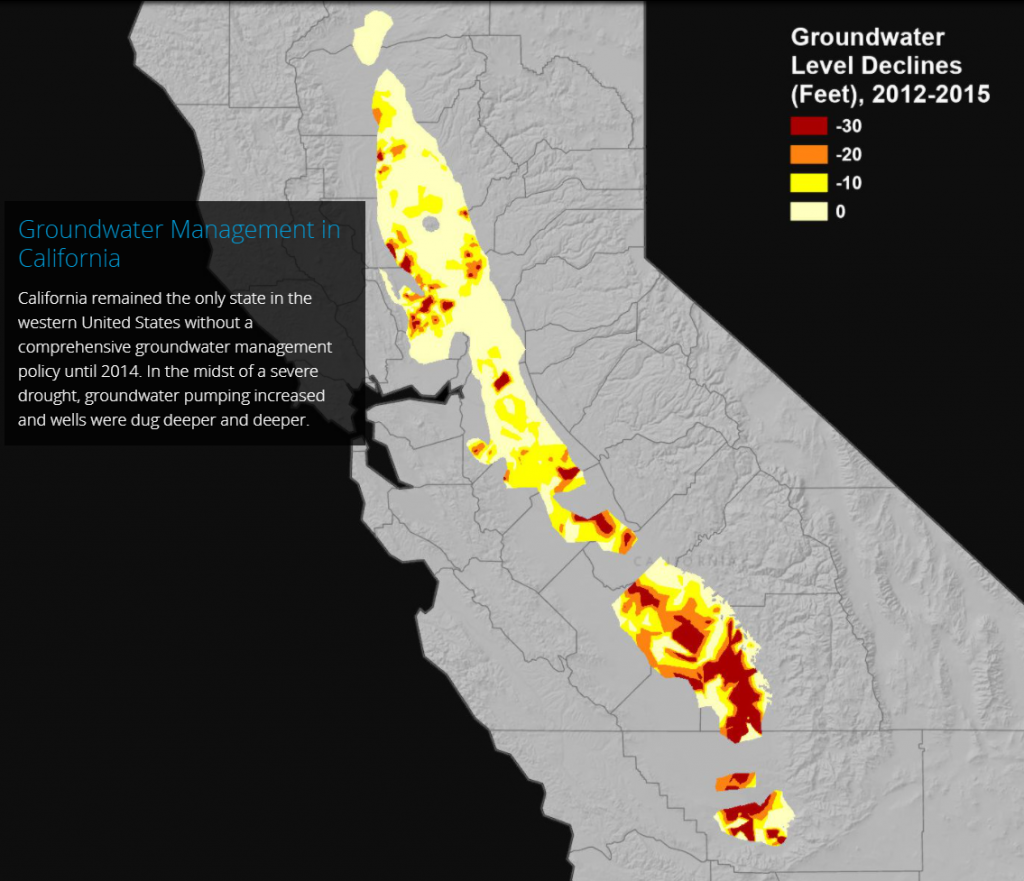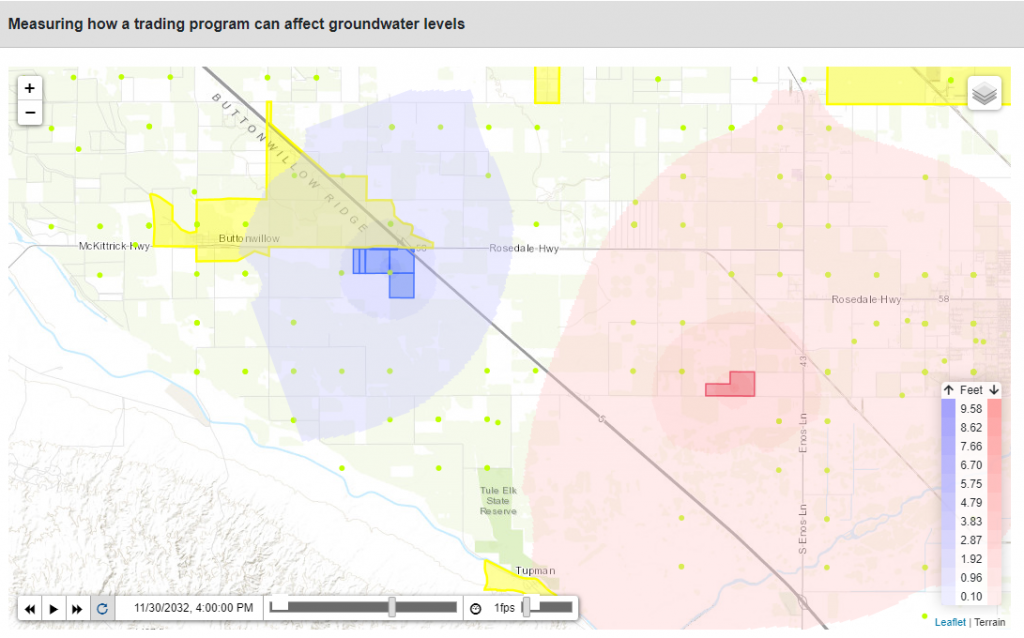A Craigslist for water trading? Learn how this new water management platform works
Eric Averett is general manager of the Rosedale-Rio Bravo Water Storage District in Kern County, California, which is one of 21 regions required by the state to balance groundwater demand and supply within 20 years under the Sustainable Groundwater Management Act.
Rosedale is home to approximately 27,500 acres of irrigated cropland and 7,500 acres of urban development. Groundwater demand there exceeds supply by approximately 5,000 acre-feet per year.
To inform landowners about their water budgets, Rosedale partnered with EDF, Sitka Technology Group, WestWater Research and local landowners to co-develop a new online, open-source water accounting and trading platform.
We asked Eric to answer a few questions about how the platform will help local landowners and how it can be expanded to other parts of the Central Valley.
What led to the idea of creating an online accounting and trading platform in partnership with EDF and how does it help with SGMA?
We developed this platform because we want to provide landowners and growers with as many tools as possible to manage their water budgets in response to SGMA.
The platform lets landowners go to their computer, log in and look at their water budget. We believe this information is powerful because it provides landowners with important information to make decisions with respect to their use of water.
On the trading side, it’s all about giving landowners flexibility. A well-designed trading program gives landowners options when it comes to how to utilize the resource.

You held workshops with landowners to shape the platform. Why? Were there any surprises?
The workshops were very important. They provided valuable feedback from landowners — future users of the platform — which will ensure that the platform meets their needs and that they will actually use it.
We heard loud and clear from landowners that they wanted something straightforward and easy to use. So the accounting portion lets landowners check their water budget very much like they would check their online bank account. The trading portion is similar to Craigslist: A landowner can post an offer to buy or sell water, and a bulletin board shows all the outstanding offers. The Central Valley’s first open-source water accounting and trading platform is another valuable tool that helps landowners and water managers implement SGMA. Share on X
The accounting portion of the platform went live in March, using water data from another EDF project called OpenET, but trading has yet to launch. How is the accounting portion being used and when will trading begin?
The foundation of the platform is accurate water accounting to track water use through the year. Accordingly, we started by rolling out the accounting portion as an introduction, to get landowners used to the platform this year. The billing and trading component of the platform will go live once we have determined a need to do so.
OpenET provides the data in the accounting platform — specifically, the data on water consumed by crops down to the field level. One of the unique things about OpenET is that it can provide data in near real-time and is easy to integrate into our online platform.
OpenET gives us a very efficient, cost-effective way to accurately measure the amount of water that is consumptively used within the district without a significant investment in meters and staffing to read them.
The platform also uses a tool called the Groundwater Evaluation Toolbox to model scenarios. Why did you include GET?
As we try new strategies and tools to comply with SGMA, it’s important to fully understand potential impacts and benefits. GET lets us very easily model scenarios to proactively understand potential outcomes before actions are taken.

One unique feature about this project is that it’s open source. What does that mean and why does it matter?
Using open-source code to build the platform was very important to me and to EDF. It means that anyone can look at, copy, customize and use the code to create their own version of our platform without having to start from scratch — and at a much lower cost.
We hope providing this open-source code will enable other water agencies to replicate the platform and expand it to serve other areas of the Central Valley facing similar water challenges.










